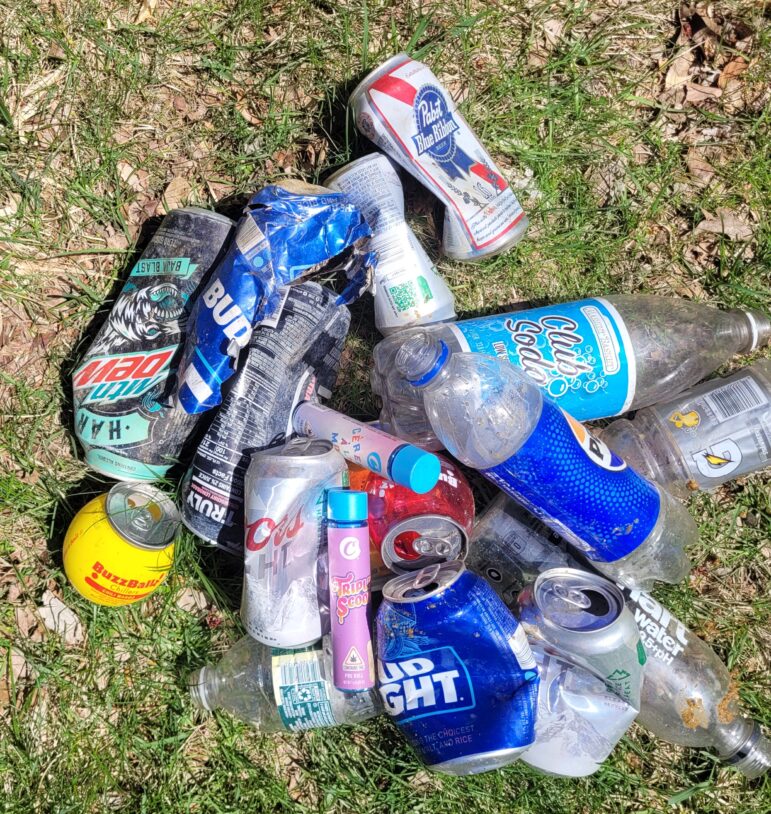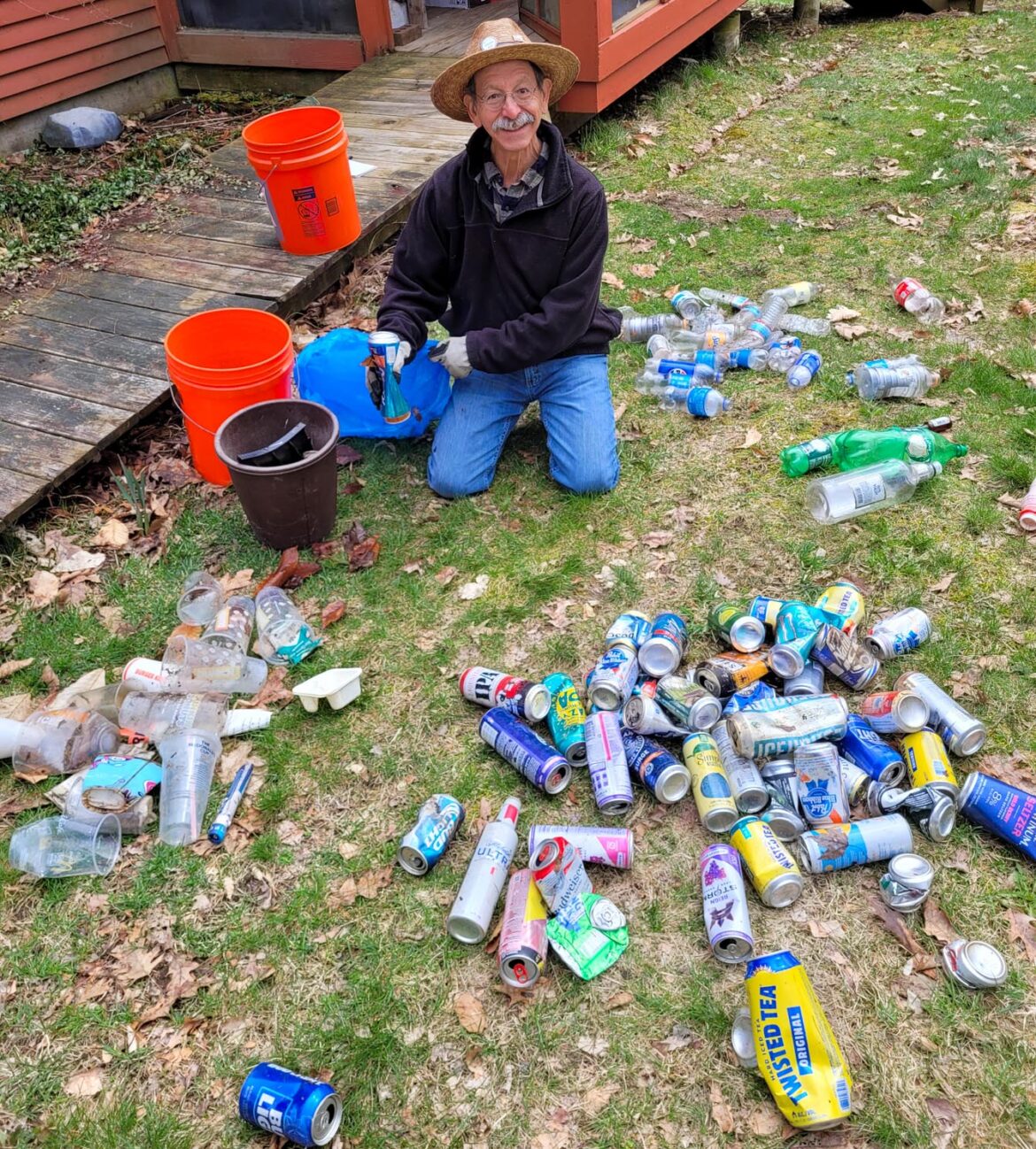
Some of this year’s trash haul collected by and photo by ARNIE ALPERT.
Please share this story on social media.
By Arnie Alpert, Active with the Activists

Arnie Alpert spent decades as a community organizer/educator in NH movements for social justice and peace. Officially retired since 2020, he now patrols the roadsides in Canterbury.
CANTERBURY—Diversity may be out of fashion in certain circles, but my annual roadside trash survey reveals an opposing trend: Beer’s dominance among local litterers may be trending downward, with a wide array of other alcoholic and non-alcoholic drinks on the rise.
In case you’re not tuned in to the world of scientific research (also out of fashion), my roadside trash survey is conducted every spring in Canterbury along a 0.6 mile stretch of Shaker Road from Baptist Road to the Loudon town line. With the town line marker hidden behind some trees, I confess I strayed a little into Loudon.
And to be clear, the survey measures the drinking habits of litterers, not the littering habits of drinkers.
When I took my first trash census in 1998, most of the cans and bottles I found had contained beer, and those produced by Anheuser Busch made up more than half. For years, Bud Light was the most popular brand among the litterati. Plastic bottles were relatively rare. Those days are gone.
For one thing, plastic bottles are common on the roadside, and glass bottles are on their way out. (I found only 4 this year: 1 Bud, 1 Miller, 1 Twisted Tea, and 1 large wine bottle with no label). I picked up 92 cans and 28 plastic bottles, including one that contained Ensure. I’m not sure how to classify Buzzballs, the cute alcoholic orbs that seem designed for drinking while driving and then tossing out the window, but I found 4 of them, each with a different fruity flavor.
In the can category, for the second year in a row, Coors Light topped Bud Light. At 19 to 11, Coors’ performance appears to exceed the brand’s national market share. According to the National Beer Wholesalers Association, InBev, which now owns Anheuser Busch, accounts for 34% of the market, compared to 22% for Molson Coors and 15% for Constellation, importers of Modelo and Corona. Interestingly, I have yet to pick up a discarded can of Modelo Especial, which now tops Bud Light in sales at the national level. Of course, my research reveals only the brands popular among those who litter on a short stretch of road and should not be interpreted to indicate larger trends. For all I know, Gilmanton is a hotbed of litterers who favor Modelo. More research is needed.
What was also notable was the array of cans that had held hard cider, hard seltzer, or other beverages which defy easy categorization. Many of them were fruit-flavored, including watermelon, ruby grapefruit, blackberry, and black cherry. Then there were the non-alcoholic beverages, many of which are labeled “energy drinks,” but also a sparkling orange drink “made with clinically proven ingredients,” which must be reassuring to consumers. No brands among them had significant market shares when I sorted my samples.
The overall data tracks statistics compiled by professional beverageologists. They may not study litter, but they pay close attention to production and sales statistics. The National Beer Wholesalers Association proudly states that polling data shows beer is still the preferred alcoholic beverage among consumers above the age of 21. But the 2022 Gallup poll they cited shows preference for beer dropped from 46% to 35% from 2001 to 2022 while preference for spirits rose from 18% to 30% in the same period. Since I know you are curious, wine has held steady in the low 30s.
Other studies show beer is less popular than other alcoholic beverages among Gen Z consumers. “Comparing generations, Gen Z seems to have less of an affinity for alcohol,” Katharina Buchholz wrote in a 2023 report for Statista.com. “Hard seltzer, an alcoholic drink that has been quite fashionable lately, is popular among Gen Z and Millennials alike if not really among Gen X and Baby Boomers, showing that Gen Z’s consumption might not be simply decreasing but rather shifting,” she reported.
Why the shift, you ask. A piece of evidence, or really 2 pieces of evidence I found alongside Shaker Road, may offer another explanation. These were small plastic cylinders of “pre rolls” with cute names and labels stating they had held products containing THC. I have no direct knowledge, but I suspect these correspond to items that were artisanal, not industrial, back in the day, if you know what I mean.





